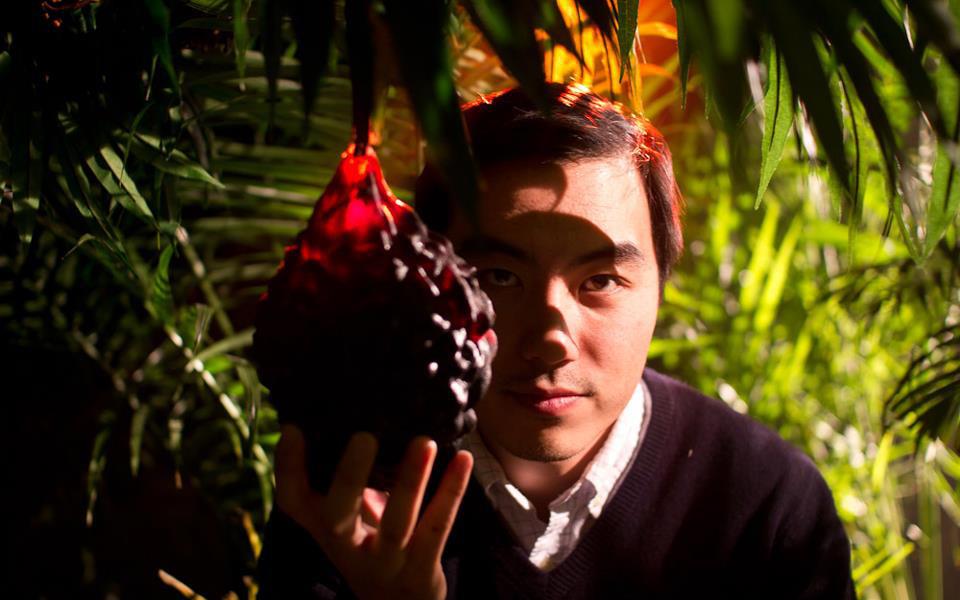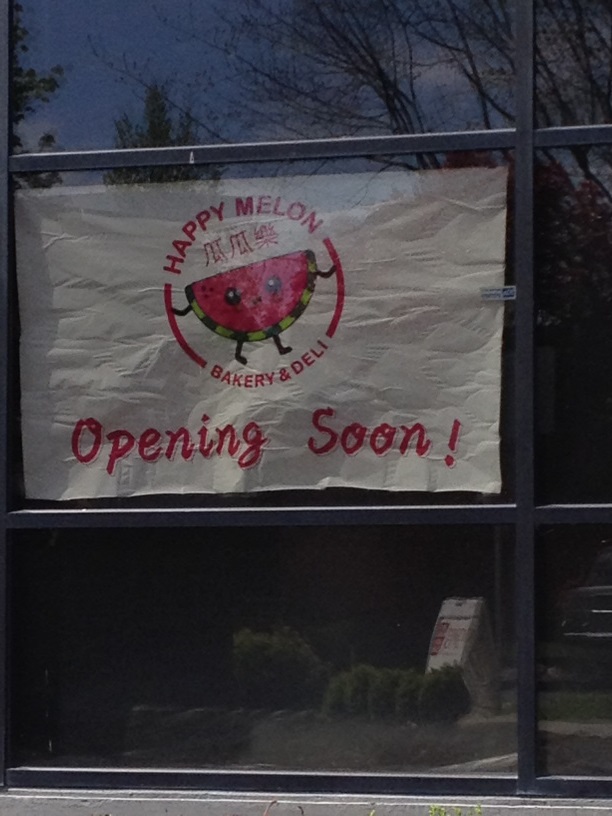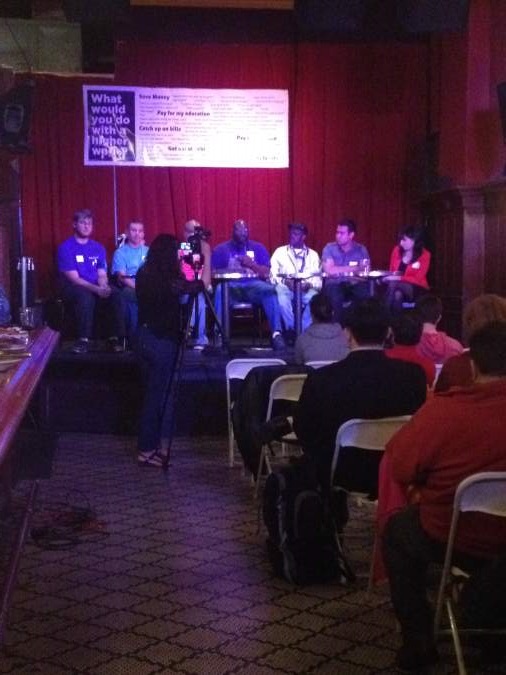There’s a section in my family’s Passover Hagaddah, which we put together after realizing that Maxwell House might not be the supreme authority on spiritual matters, that quotes Zen master Thich Naht Hanh. The passage is supposed to help make sense of the Afikoman ritual, which involves breaking a sheet of unleavened bread in two, but it’s equally applicable to all the querying and cogitating that’s occurred earlier in the Seder.
“Which is true? Which is false? Which is bad? Which good? Please calm down, my friend. Lay down your sharp sword of conceptual thinking.”
To my everlasting discredit, I wielded that sword like a ninja at Blossom Vegetarian, Renton’s year-old Vietnamese restaurant specializing in the Buddhist tradition of mock meat. Instead of admiring chef Hue Phan’s startlingly gorgeous vegetal copies of beef shank and shredded pork, I busied my Western mind with a slew of urgent questions: Is that a mushroom? Is this seitan? Could I actually prefer seaweed chicken to the real bird? And—most pressingly—who is the intended audience for caramelized prawns made from rolled bean-curd skins and silken tofu?
“We get a lot of couples,” a server confided as she sat us at a wooden table in the airy, red-walled dining room. Other than an open kitchen and a snug patio out back, nothing distinguishes the interior from that of every other polished Asian restaurant where the check’s presented with Andes mints instead of stale fortune cookies. (Blossom’s predecessor—owned, like Blossom, by prolific Renton restaurateur Huong Sens—served duck-filled calamari and blueberry martinis.)
According to our server, Blossom is a godsend for herbivore/omnivore intermarriages. As she described it, the restaurant functions as a kind of dietary utopia where a meat-loving lady can have her flank steak and her veggie partner can eat it too. Still, I wonder how many vegetarians want their palates overpowered by flesh flavors, and how many committed carnivores really hope for a plate of elaborately disguised jicama and potatoes when they ask for ham. My hunch is that handmade meat appeals to a slightly different demographic.
Buddhist cuisine was developed nearly two millennia ago, with the first recipes for meat replicas appearing in an agricultural text associated with the Northern Wei Dynasty (368–534 A.D.) Although not every school of Buddhist thought is strictly vegetarian, many Buddhists believe eating meat is incompatible with the compassion they strive to practice. But early Buddhists wanted to adequately feed temple visitors who didn’t adhere to their dietary codes, so they devised a way to make fish balls from soybeans, among other concoctions. The preparations were also popular with converts.
“This is done for the Asian Buddhists who come to be vegetarians after living as meat-eaters for awhile,” chef Phan, a Buddhist nun, explains. “They have a fondness for the taste and textures of certain favorite dishes.”
Catering to nostalgic Buddhists remains a legitimate rationale for phony meat, as does just plain having fun in the kitchen. Catering to traveling alms-givers? Possibly past its expiration date. But the current era has given rise to yet another reason for eaters to embrace Buddhist-style beef, chicken, seafood, and pork: It might save the planet.
The U.S. is hardly on the brink of a vegetarian revolution. The average American eats about a half-pound of meat every day. That translates to the annual slaughter of 10 billion animals, many of which are raised in dire conditions on factory farms. And those farms are greenhouse-gas machines: According to food activist Mark Bittman, if Americans slashed their meat consumption by 20 percent, the conservation payoff would be the equivalent of every driver trading in a Camry for a Prius.
Blossom’s not-meat is the ideal food for the Prius set. It doesn’t require any serious concessions; it’s hip; it’s green; it’s a technological wonder and an aesthetic champ. Plus, unlike the Prius, it’s pretty tasty. For earth- loving eaters who can reach Renton without leaving a giant carbon footprint, it surely makes sense to swap one meaty weeknight dinner for Blossom’s extraordinary bun bo hue.
Like all the dishes at Blossom, the bun is visually indistinguishable from its meat-based counterpart. In addition to a knot of noodles, perky basil, grated carrots, jalapeños, and a heap of cilantro and mint, the broth’s accompanied by a triangle of fried tofu and salty “beef” (going forward, assume quotation marks) that could hold its own in a suspect lineup. The slices have the dark, sweaty appearance of beef carved from a gyro spit, a more modern miracle of formed meat.
But if the looks of the beef are intentionally deceiving, there’s no misdirection in the broth bowl. The adobe-red soup looks primed to claw the tongue with peppery spice, and it pounces on first spoonful. The heat has subtle tropical-fruit accents, but they’ll only be noticed by eaters who regularly plead with servers to let them go beyond five-star heat. Not counting the dishes I’ve destroyed with chili oil and Sriracha, Blossom’s bun was one of the hottest dishes I’ve had in Seattle.
On the opposite end of the soup spectrum, Blossom’s pumpkin and lotus-seed soup— one of the few dishes on the lengthy menu that doesn’t feature any meat wannabes—is a velvety shortcut to serenity. The lulling soup is almost translucent, but has a heft that honors the roly-poly pumpkin. Seasoned liberally with ginger and crowded with silken tofu flotsam, this is the soup to remember when you learn at the very last minute that a Thanksgiving guest has gone vegetarian.
As much as I loved the liquid portion of Blossom’s menu, when Phan works with solids, she exploits every sculptural opportunity for beauty. Plump puff pastries—folded into twisty-edged crescents stuffed with mushrooms, tofu, peas, and carrots—are each exactly the same size as the next. Carrots, interspersed with a sesame beef so convincing that someone ought to say “Abracadabra!” when it’s served, are trimmed into darling little ziggurats.
Phan refuses to reveal the ingredients in her mock meats, and it’s almost impossible to reverse-engineer them, so I don’t know whether to credit toasted rice flour, seitan, or seaweed for the robust skin-on lemongrass mackerel, sliced into chunks, or the stubs of roast pork that nicely summoned the distinctive fattiness of swine.
“Our food is not fatty or heavy!” Phan chastised me when I asked if she deliberately tried to recreate meat’s inherent flaws or correct them. “We try to make good healthy dishes.” Some of those dishes are harder than others to perfect, she adds.
Phan is now working on a mi vit, or duck noodle soup, which she hopes to add soon to the menu. The restaurant is also in the process of securing its beer-and-wine license. Faking meat may be an ancient pastime, but the dynamic Blossom feels very much of the moment.
Price Guide
Puff pastry $6
Bun bo hue $10
Pumpkin soup $10
Fried mackerel $13
Sesame beef $13








